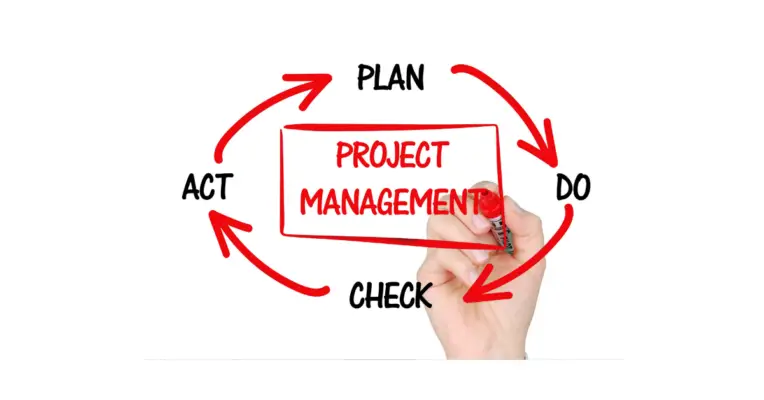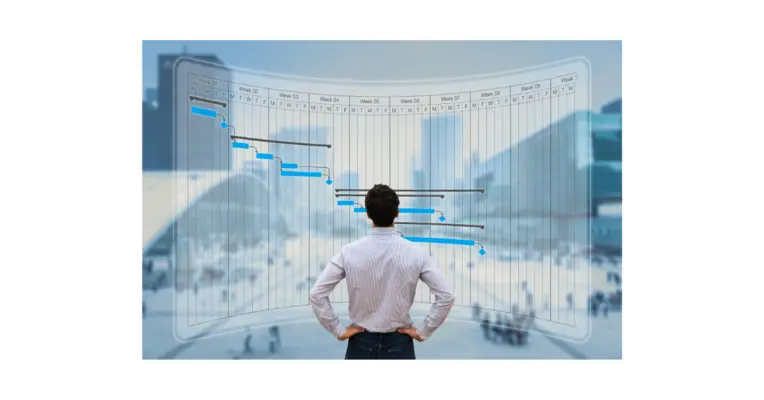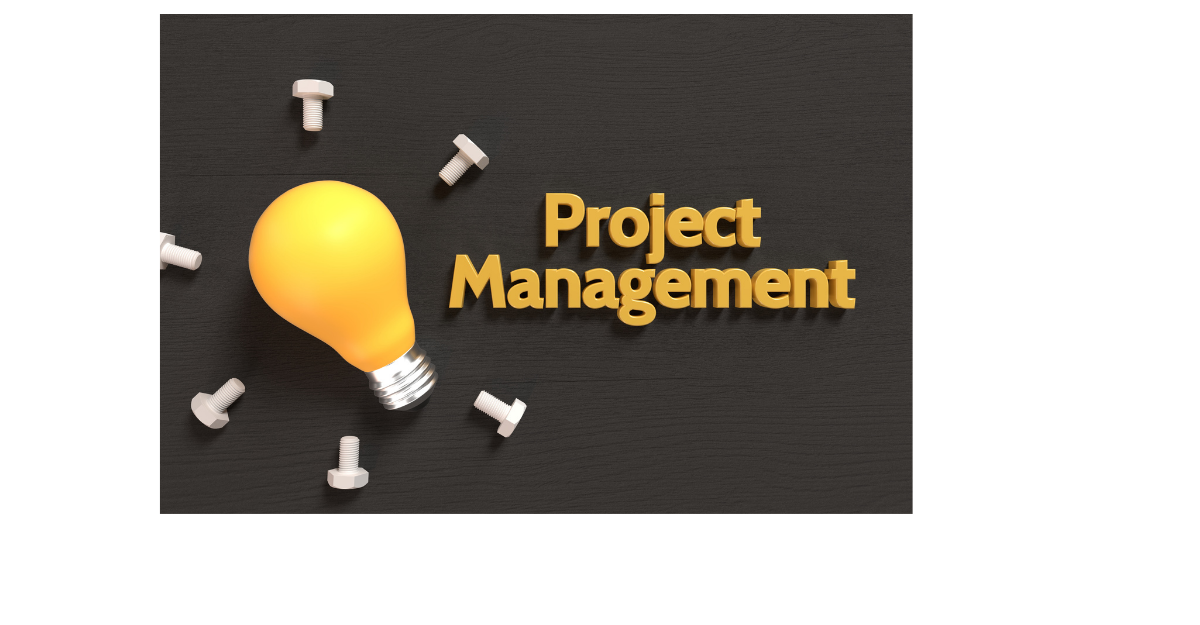The role of the project manager during risk assessment is to lead the team in identifying potential risks and developing strategies to mitigate those risks. The project manager should work with the project team to identify potential risks and assess their likelihood of occurrence.
The project manager will also work with stakeholders to identify acceptable risks that need to be addressed. One of the most important aspects of risk assessment is identifying the probability of a particular risk occurring and its potential impact on the project.
Once risks have been identified, the project manager will work with the team to develop mitigation strategies and allocate resources accordingly. The goal is to minimize the negative impact of risks on the project and maximize the chances of success.
To do this effectively, project managers must understand the project’s objectives and how each risk could affect them. They must also be able to assess the likelihood of each risk occurring and the potential severity of its impact.
Project risk monitoring is a process for the assessment, evaluation, and responding to any risk occurring at the end of a project that helps it to keep on course to achieve the intended goals. Risk management is not reactive – there is an element to plan for determining the risk that might happen to a project and controlling this risk if it actually happens.
Project risk management can affect project timelines and costs. Risk is possible and when a project management situation turns into reality then it will be considered an issue that needs to be addressed.
The Project Management Institute (PMI) defines risk management as “the coordinated activities to direct and control an enterprise in terms of opportunity and threat.” In other words, it’s the process of identifying, assessing, and responding to risks.
Project risk is the possibility that something might go wrong during a project. Potential risks can come from many sources, including uncertainty about the project itself, the project team members, or the environment in which the project will be carried out. A good risk management strategy should identify potential risks and then put in place plans to mitigate them.
The project manager is responsible for overseeing the risk management process and ensuring that potential risks are identified and dealt with in a timely manner. However, all members of the project team should be aware of the potential for project risk and be prepared to take action if necessary.
Risk assessment is important for any project manager and for project risk management. It is essential to understand the risks that are inherent in any project and develop a plan to mitigate them. But what is the role of the project manager during risk assessment? What steps can they take to ensure that project risk management goes smoothly? This blog post will explore those questions, and provide some tips for effective risk management and how to manage risk.
Project Management
Project management is the process of planning, organizing, and controlling resources to achieve specific goals. A project is a temporary endeavor with a defined beginning and end.
The project manager is responsible for achieving the project’s objectives within time, cost, and quality constraints. Project management includes both the technical and human aspects of managing a project.
The technical aspects include ensuring the project is completed on time, within budget, and to the required quality standards. Project management tests the human aspects including managing the team, dealing with stakeholders, and communicating. Project management is a complex process, but some basic steps can help ensure success:
- Define the objectives of the project and create a plan to achieve them.
- Assemble a team of people with the skills and knowledge necessary to complete the project.
- Manage the resources (time, money, materials) needed to complete the project.
- Communicate with all stakeholders (project team, customers, suppliers) throughout the project.
- Monitor progress and make adjustments as necessary to ensure that the project is completed on time, within budget, and to the required quality standards.
Project management is essential for any business undertaking involving multiple tasks, people, and goals. Project management software can be used in project risk management.
What is going on with my planning process? What can I do wrong in risk analysis in project management?. It seems negative but project managers know that such thinking is a preventive tact.
Occasionally problems arise that require mitigation to know how to mitigate the risks associated with the project. Can someone resolve a difficult problem in a timely manner? There’ll be practical things you can do about it.
Project management must understand risks in an environment with limited resources and the potential to reduce them. Project management relates to the management of projects.
Project managers have a primary task in this regard to understand organizational knowledge and technological developments in order to understand better and minimize risk relating to scopes.
In the field of projects, the roles of project managers are crucial—they must assess, minimize, eliminate and mitigate risk. Generally, construction engineers and IT jobs are their responsibility.
A successful project manager is someone who can lead a team to its goal while dealing with potential risks along the way. This involves having strong project management skills and a good understanding of the project management software that will be used.
Additionally, it is important to be aware of any project’s potential risks and have a plan for dealing with them. A project manager can increase the likelihood of success by being prepared for all eventualities.
Ultimately, the key to being a successful project manager is deeply understanding the project management context.

What is Risk Management?
Risk Management is the practice of Project Management where risk assessment identifies, evaluates/prevents, or mitigates risks affecting a project – potentially impacting the outcome.
Project managers manage risks throughout a project and supervise the risk processes. Project managers must know how risk management works and what obstacles affect a team’s ability to generate results.
Projects are becoming increasingly complex, which can make it difficult to identify and manage risks. Quantitative risk analysis is a structured approach that uses mathematical models to identify and assess the potential impact of risks. This information can then be used to develop strategies for mitigating project risk.
The project life cycle is divided into four phases: initiation, planning, execution, and closure. Each phase brings its own challenges and opportunities for risk management. For example, stakeholders need to be identified and engaged during the initiation phase.
The planning phase requires a detailed understanding of the project objectives and scope. Execution is when the actual work of the project is carried out.
The closure is when the project ends and final deliverables are delivered to the customer. Project progress should be monitored throughout each stage to manage risks effectively.
Managing Risk throughout the Organization
How will your organization handle risks and mitigate risks in everyday activities? Developing risk management protocols in organizations’ cultures can decrease costs over time.
So each time you start a project, there’s no need to reinvent a wheel. Things like organizational records or historical records can accumulate an archive of useful information for your approach to risk management in a different project.
A good project manager monitors risks throughout the life of a project. By identifying risks early, a project manager can assess the risks and develop strategies to mitigate the exposure.
By regularly monitoring risks, a project manager can ensure that the identified risks are being managed effectively and that new risks are being identified promptly. By monitoring risks, a good project manager can ensure that a project stays on track and remains with less risk exposure.
Assessing risks early on and putting together a plan to avoid or mitigate them is one of the most important duties of a project manager. By doing so, they can keep the project on track and ensure it runs smoothly from start to finish.

Project Managers
A project manager is a professional who helps plan, execute, and oversee projects. They are responsible for ensuring that a project is completed on time, within budget, and according to specifications and project scope. Project managers typically have experience in the field in which they are managing projects and training in project management.
In some cases, a project manager may also supervise team members involved. Project managers typically work with team members, clients, and upper management to ensure that a project stays on track and is completed successfully.
They may also provide progress reports and keep stakeholders updated on the project’s status.
Project managers sometimes work in different fields, including planning and monitoring. Each day the team tries to assign tasks to the team and find logical solutions to any problem.
Usually, in implementation manager assessment, a project is not finished when a new product is launched. The project management team must be able to plan for the unexpected. Project managers follow a professional development plan to achieve project management roles.
A successful project manager should have a combination of technical and interpersonal skills used to hire project managers. First and foremost, they must be able to plan and execute projects flawlessly.
This requires excellent time management, organizational, and problem-solving skills. They must also communicate clearly and concisely with their team, clients, and upper-management hiring managers
.
Furthermore, a good project manager should be able to motivate their team and maintain a positive attitude even under pressure. Lastly, they must be proactive, one step ahead, anticipate potential problems, and have solutions ready. A project manager with these qualities is essential for ensuring the success of any project.
Being a project manager has its perks in the hiring process. You get to lead a team, develop creative solutions to problems, and see a project through from start to finish. But what are the benefits of being a project manager? Here are four:
First, you get to develop your leadership skills as a project manager. You learn how to delegate tasks, motivate your team, and make difficult decisions.
Second, you gain a valuable overview of the entire project. This helps you understand how each piece fits together and identify potential bottlenecks.
Third, you learn to think on your feet and develop creative solutions to problems. This is a valuable skill in any career.
Finally, being a project manager gives you a sense of pride and accomplishment. You can reflect on a completed project and know you made it happen.
The Risk Manager
Risk managers provide information on project risks and opportunities, as well as their mitigation plans for risk and their use of opportunities. These figures form a pivotal part of project risk management.
This ensures compliance with RPS procedures. They are most active at detecting and updating risks as they arise in the marketplace. The Risk Manager may perform additional tasks as follows:
Risk Management Team Roles: Who takes care of Project Risk?
A good person can handle risk effectively if needed, so it is impossible to get lost. This involves many responsibilities for a project manager, and the cost of such an effort will likely be high if there is an issue.
Therefore, the risk management expert should know what risk is a possibility and assist with realizing potential solutions. For larger projects, a risk manager is required. Even if there are few key stakeholders within immediate risk management teams there is still a lot of involvement in risk/opportunité management.
Enterprise Risk Management Team
Large businesses will probably have enterprise risk management teams managing risk within organizations. Similar to an experienced risk manager, the Risk Management group provides a comprehensive overview of risk and opportunity and helps the organization to ensure compliance with the Risk Management process.
It also requires that project risk be transferred to the portfolio level so that a team can efficiently handle enterprise hazards. These teams are critical in order to maintain consistent and efficient processes for managing risks across all departments of an organization.
The sponsor
According to the organization, sponsors may identify red flag issues from creating their charter (with the assistance of the project management). In this initial process, Risk Managers can identify risks with input from the project stakeholders.
The sponsor can establish a worldwide budget for the risk through a risk manager. The project must validate the proposed budget or release funding for confirmed risks throughout its life cycle.
The project team
The Risk Manager is part of the project team and can be connected to the rest of its members. The Project Team is staffed by PMO, planner, and cost control. As part of the maintenance of the Risk Register, the Risk Manager meets with the project team to determine the potential impact.
Project teams are an organizational name that describes a group of individuals working together on projects. Project teams are typically created for projects where specific skill sets must be possessed for them to perform.
Typically the project’s goal should be the development of the software program. It carries out projects on project budgets, schedules, and projects throughout their lifecycle.
Project managers oversee all projects and ensure the completion of the project as required. They assign tasks, monitor progress, and monitor the progress.
The risk owner
The Risk Owners bear all risks. Together with a risk manager, these experts hold technical information regarding risk and opportunity. They are able to be the origin for identifying and thus describing the risk defining its causes and consequences. So the client must be informed about their risk.
It defines the treatment plan action and coordinates the ownership of these actions. It’s a job that requires risk management. Risk owners must comply with the corresponding deadlines specified in their mitigation plans and opportunities.
The project manager
Project managers work with risk managers. It defines expectations and validates the suggestions of risk managers regarding the project’s progress.
The team will need an international perspective on risks and potentials. They’re also responsible for positioning themselves in critical risk response strategies suggested by risk owners, such as accepting plans to reduce the likelihood of impacts.
The manager is responsible if projects fall within a portfolio and ensures escalating the critical risk levels.
The Risk Center of Competence
Risk Centers enable optimum risk management strategies for organizations by creating and improving the methods, procedures, and resources required. It can serve as trainers and guides and provide the required capacity for the project.
This group provides documentation, assistance, and auditing advice. Where there is an issue with methodology, the risk management consultant should consult with the risk management team.
The Project Risk Management Process
As projects become dynamic, organizations must take control over the uncertainties that may accompany these changes. In addition, the increasing need to hire skilled project managers reflects this trend – a forecast of 23m jobs in 2027.
For those seeking a new project management job, the ability to deal with risks is one of the skills most employers look for. To prevent risks effectively, you should learn to understand how they are incurred and how to manage them.
How to manage risk?
For a good risk management plan, the first steps must be clear. Create an elaborate charter for your project’s vision, goals, scope, and deliverables if you wish to do so.
It is also easy to assess risks during all phases of a project. So the best thing that could be done is involve a very early team to detect the risk. Make sure you also involve other people in the risk management process.
Many project management email their project team requesting they send it if there are any issues. To better plot project risks, we need more data.
Project risks
There are no equal risks. Risk can be positive or negative, although most assume risk is purely a second nature. Positive risks can be opportunities that could affect the plan or change a project’s overall outcome.
Negative risks make up part of a risk management plan. Like positive risks, they have a difference in their approach. It is important to account for known negative risks to neutralize their impact, but it is also possible to manage positive risk effectively.
Steps in the Risk Management Process
Project management usually follows an annual risk management process in order to detect, understand and respond to threats and opportunities. However, the first step should be determining the organization’s practices and how you will conduct risk management in the project in advance.
Consequently, these steps will drive the following. Project managers must be flexible and disciplined to adapt constantly to change through any given project and its complexities.
Although it’s not always possible to remove all risks from a program’s operations, a project administrator should consider implementing these techniques.

Understand the risk event
One common mistake in risk management is thinking about potential outcomes rather than risk events. Some people may see missing deadlines as threatening their projects.
The project may be at risk of completing the project, but the risks and benefits are not really there, but the impacts. Instead think about risks as follows: Due to X Y might occur and cause Z impacts. This helps us understand why risk occurs and what steps to take to prevent it.
Create a risk management plan
All those working on a project know the importance of developing the best project plan. Typically these plans have many other aspects, including risk management.
Emerson explains how risk management plans can define their methodology for defining and prioritizing risk. A plan can take time and effort, but investing in this plan can be worth the time and effort.
Keep your risk register up to date
This is the list that your risk management program contains that will contain all the possible risks that could impact your project.
Maintaining current knowledge about any issues and keeping it updated is important to ensure you always have a good snapshot. Use the Risk Register to monitor how your team reacts and the risk that was identified in the event that the risk occurred.

Chris Ekai is a Risk Management expert with over 10 years of experience in the field. He has a Master’s(MSc) degree in Risk Management from University of Portsmouth and is a CPA and Finance professional. He currently works as a Content Manager at Risk Publishing, writing about Enterprise Risk Management, Business Continuity Management and Project Management.

